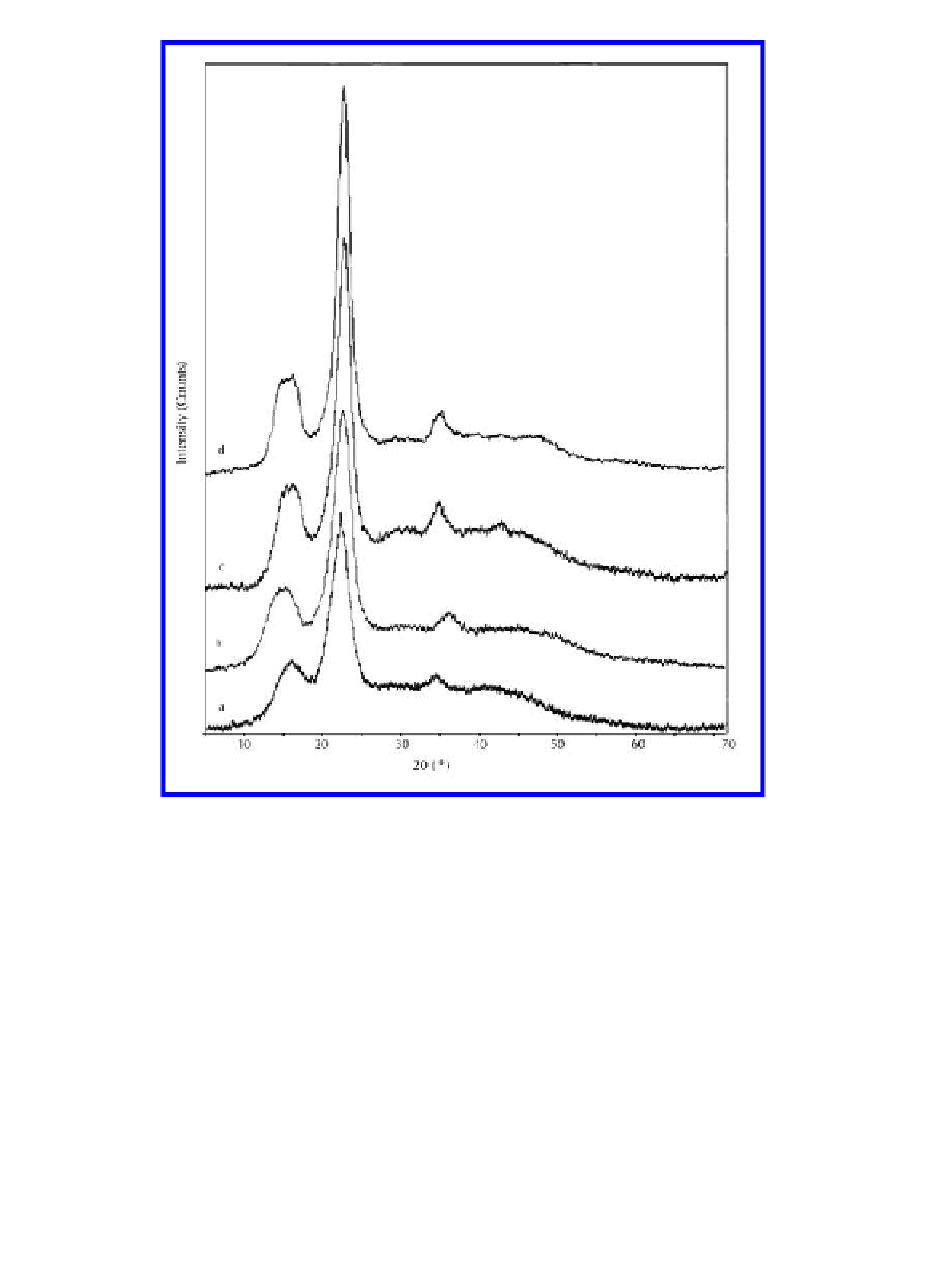Biomedical Engineering Reference
In-Depth Information
Figure 6.
X-ray diffraction pattern of (a) Rae kenaf fibre, (b) Alkali treated kenaf fibre, (c) Bleached
kenaf fibre, (d) cellulose nanowhiskers.
Moreover, after hydrolysis, the hydronium ions could penetrate into the amor-
phous regions of cellulose promoting the hydrolytic cleavage of glycosidic bonds and
finally releasing the individual crystallines (de Souze Lima and Brosali, 2004) and
increase the degree of crystallinity. It is believed that the higher crystallinity leads to
higher tensile strength of the fiber and thereby improved mechanical properties of the
corresponding nanocomposites (Alemdar and Sain, 2008).
tGa analysis
The thermal degradation behavior of raw fiber, alkali treated fiber, bleached fiber and
CNW investigated from TGA and DTA measurements (
Figure 7)
.
The TGA curve il-
lustrates an initial weight loss about 4% during heating to 100°C which corresponds
to vaporization and removal of water in fibers. Due to the differences in the chemical
structure between hemicelluloses, cellulose and lignin, they usually decompose at dif-
ferent temperatures (Yang et al., 2007).

Search WWH ::

Custom Search